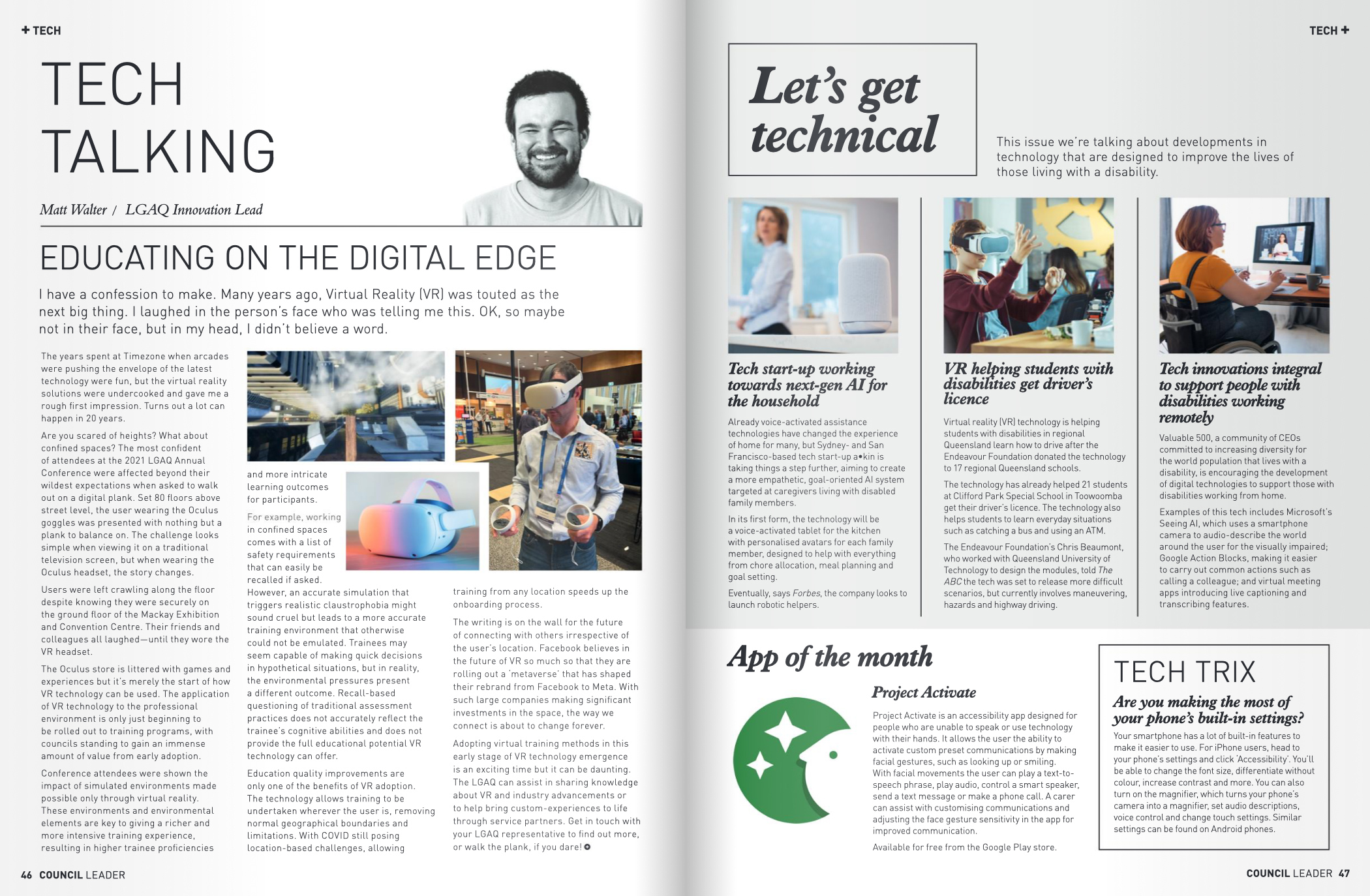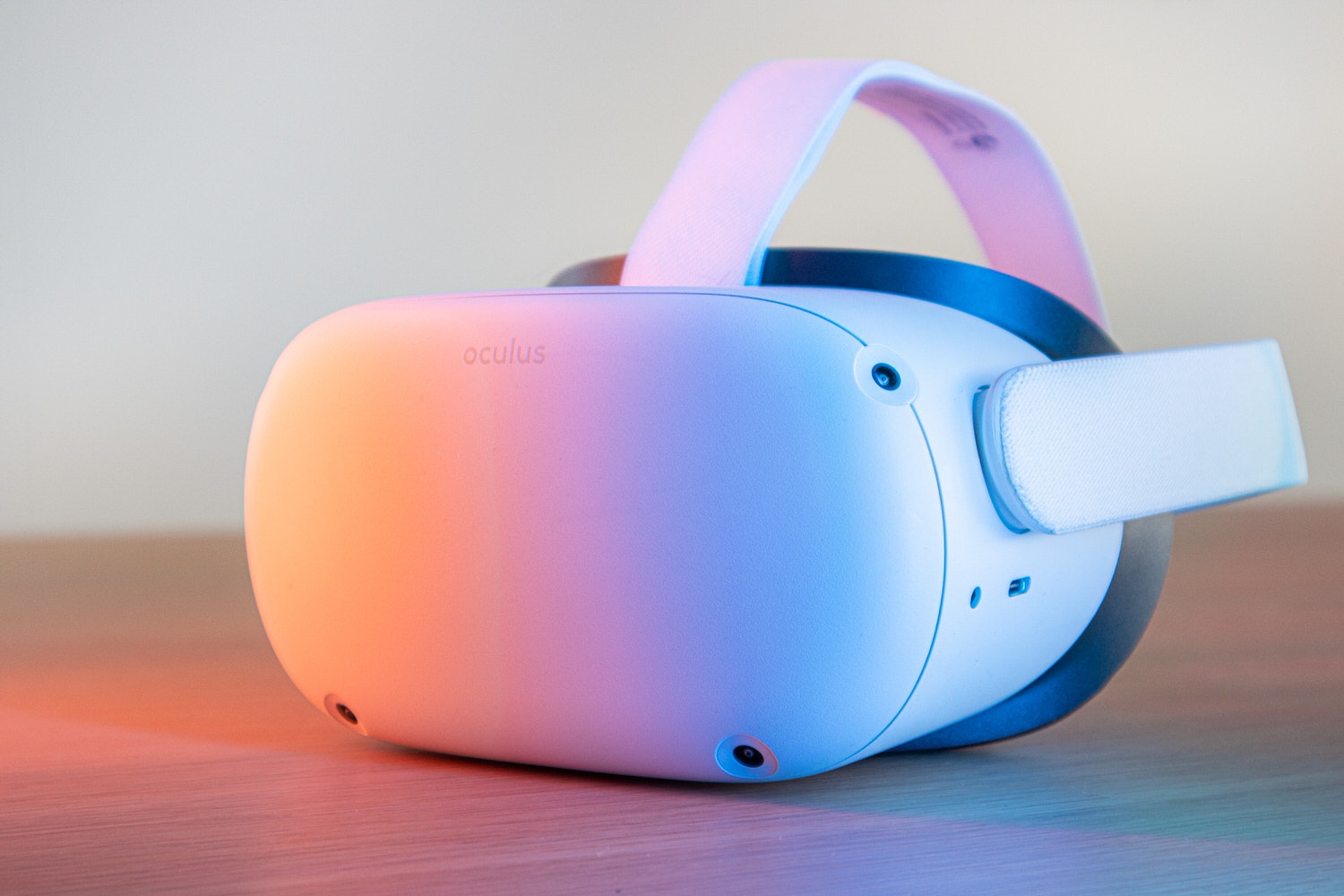I have a confession to make. Many years ago, Virtual Reality (VR) was touted as the next big thing. I laughed in the person’s face who was telling me this. OK, so maybe not in their face, but in my head, I didn’t believe a word.
The years spent at Timezone when arcades were pushing the envelope of the latest technology were fun, but the virtual reality solutions were undercooked and gave me a really rough first impression. Turns out a lot can happen in 20 years.
Are you scared of heights? What about confined spaces? The most confident of attendees at the 2021 LGAQ Annual Conference were affected beyond their wildest expectations when asked to walk out on a digital plank. Set 80 floors above street level, the user wearing the Oculus goggles is presented with nothing but a plank to balance on. The challenge looks simple when viewing it on a traditional television screen, but when wearing the Oculus headset, the story changes.
Users were left crawling along the floor despite knowing they were securely on the ground floor of the Mackay Exhibition and Convention Center. Their friends and colleagues all laughed – until they wore the VR headset.
The Oculus store is littered with games and experiences but it’s merely the start of how VR technology can be used. The application of VR technology to the professional environment is only just beginning to be rolled out to training programs, with councils standing to gain an immense amount of value from early adoption.
Conference attendees were shown the impact of simulated environments made possible only through virtual reality. These environments and environmental elements are key to giving a richer and more intensive training experience, resulting in higher trainee proficiencies and more intricate learning outcomes for participants.
For example, working in confined spaces comes with a list of safety requirements that can easily be recalled if asked. However, an accurate simulation that triggers realistic claustrophobia might sound cruel, but leads to a more accurate training environment that otherwise could not be emulated. Trainees may seem capable of making quick decisions in hypothetical situations, but in reality, the environmental pressures present a different outcome. Recall-based questioning of traditional assessment practices does not accurately reflect the trainee’s cognitive abilities and does not provide the full educational potential VR technology can offer.
Education quality improvements are only one of the benefits of VR adoption. The technology allows training to be undertaken wherever the user is, removing normal geographical boundaries and limitations. With COVID still posing location-based challenges, allowing training from any location speeds up the onboarding process.

The original article as shown in Council Leader
The writing is on the wall for the future of connecting with others irrespective of the user’s location. Facebook believes in the future of VR so much so that they are rolling out a ‘metaverse’ that has shaped their rebrand from Facebook to Meta. With such large companies making significant investments in the space, the way we connect is about to change forever.
Adopting virtual training methods in this early stage of VR technology emergence is an exciting time, but can be daunting. The LGAQ can assist in sharing knowledge about VR and industry advancements or to help bring custom-experiences to life through service partners. Get in touch with your LGAQ representative to find out more, or walk the plank, if you dare!
Matthew James Oxlade
A digital leader that has delivered solutions for entities of all sizes including the Commonwealth Games, Brisbane City Council, local businesses and freelancers.I help fin-tech digital product teams to create amazing experiences by crafting top-level UI/UX.


